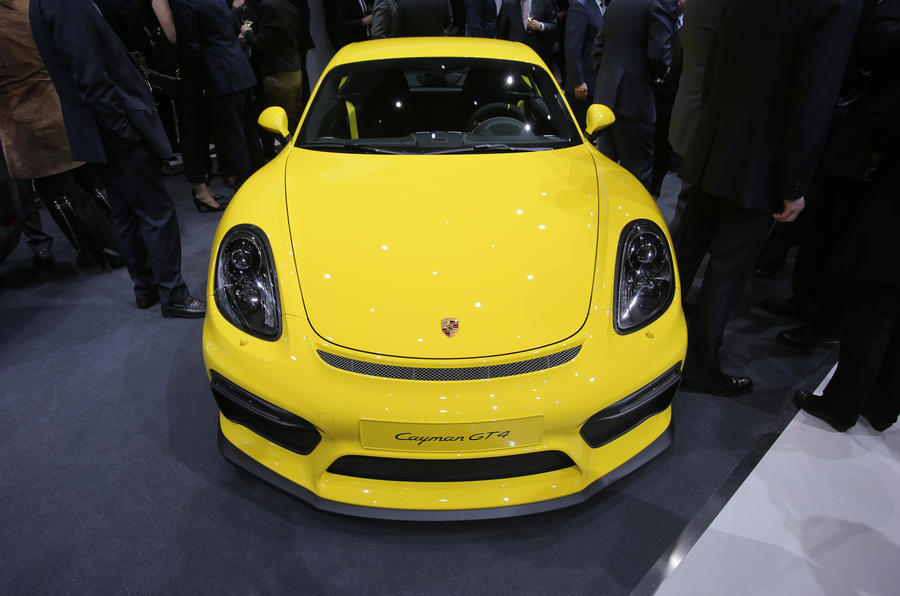This is the Porsche Cayman GT4, a potent Motorsport-developed version of the mid-engined sports car that’s been equipped with a larger engine from the 911 Carrera S and hooked up to a manual gearbox.
The Cayman GT4 can be ordered from today, starting from £64,451, just shy of £10,000 more than the Cayman GTS which it sits above in Porsche’s range. First deliveries are due in late March, and the model has made its world debut at the Geneva motor show.
Positioned between the Cayman GTS and the 911 GT3, the Cayman GT4 uses a stiffened and strengthened Cayman bodyshell as a starting point. It is lowered by 30mm and then, as Porsche GT boss Andreas Preuninger says, “as many GT parts as possible” are added to it. “We didn’t make this out of a Cayman GTS,” he says. “This is an entry-level mid-engined GT3 car.”
Mounted midships is a reworked version of the Carrera S’s 3.8-litre flat six engine, producing 380bhp at 7400rpm and 310lb ft at 4750-6000rpm. It is hooked up to a modified version of the Cayman GTS’s six-speed manual gearbox. A PDK dual-clutch automatic was considered but rejected, meaning the Cayman GT4 is manual only.
Preuninger says the engine didn’t fit at first, and describes the end result as an “old-school hot rod – a big engine in a small car”. He adds: “It’s a whole new package – very driveable, an explosive experience that makes you smile all the time.”
The 0-62mph sprint takes 4.4sec and the top speed is 183mph. Combined fuel economy is 27.4mpg and CO2 emissions are rated at 238g/km.
The front axle and suspension are borrowed from the 911 GT3 and the rear axle and forged aluminium double wishbone suspension are completely new. Dampers are taken from the 911 GT3. The electric steering system from the 911 GT3 does make it onto the Cayman GT4 but is given new software.
There’s no need for the likes of the 911 GT3’s rear-wheel steering for the Cayman GT4, because the mid-engined car simply doesn’t need it, according to Preuninger. The result is a purer driving experience.
Stopping power is provided by standard steel brakes, or optional carbon-ceramics from the 911 GT3 that Preuninger describes as “slightly over-engineered and delightfully oversized” when fitted to the Cayman GT4. The forged 20in alloy wheels are new and are shod in Michelin Pilot Sport Cup 2 tyres. The rear 295/30 ZR20 tyres are bespoke, but the front 245/35 ZR20s are borrowed from the 911 GT3 as they were “a perfect match”, according to Preuninger.



































































Join the debate
Add your comment
Nice!
Best sports car ever made? I
Amazing !